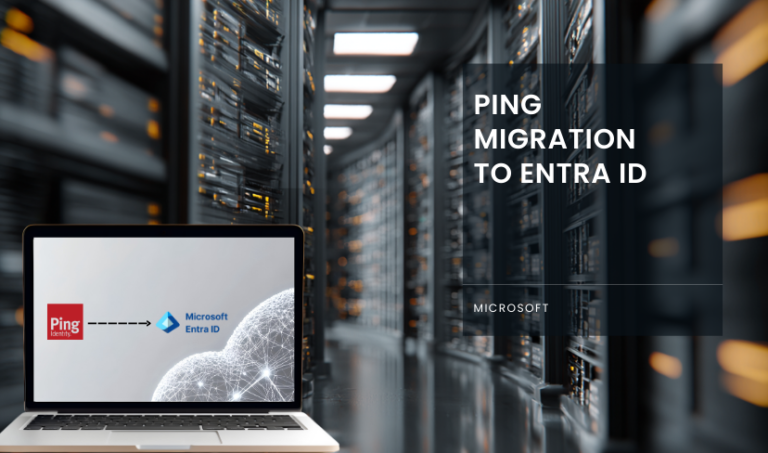Written by KRITIKA SINHA | MARKETING
A patient is rushed into surgery, but the electronic health record system crashes. The attending physician can’t access vital allergy information. Elsewhere, a nurse waits hours for a system reboot before logging medication doses. In yet another hospital, ransomware halts operations for three days. These are not isolated incidents; they’re part of a widespread problem: outdated or poorly managed IT infrastructure in the healthcare sector. The consequences? Delayed treatments, lost data, non-compliance fines, and—most critically—compromised patient safety.
Healthcare professionals work tirelessly to save lives, but when their digital tools fail, even the best expertise can’t compensate. This blog will explore why robust IT infrastructure is no longer optional in healthcare; it’s a lifeline. You’ll learn what makes healthcare IT so complex, how infrastructure impacts operations and compliance, and where the sector is headed. Most importantly, you’ll see how Transputec supports medical organisations in building resilient, secure, and scalable IT environments that save more than time; they save lives.
Why IT Infrastructure in the Healthcare Sector is Mission-Critical
Healthcare IT systems aren’t just about convenience—they’re foundational to service delivery. Electronic health records (EHRs), medical imaging systems, telemedicine platforms, AI diagnostics, and Internet of Medical Things (IoMT) devices all require a reliable IT infrastructure. According to a 2023 HIMSS survey, 74% of healthcare leaders cited IT infrastructure as a top investment priority, with cybersecurity and system integration named as urgent needs. Healthcare generates about 30% of the world’s data, expected to grow faster than any other industry, yet many hospitals still rely on legacy systems from the early 2000s.
Here’s what’s at stake:
- Patient Safety: Real-time access to medical data can mean the difference between a correct diagnosis and a life-threatening error.
- Regulatory Compliance: HIPAA, GDPR, and other regulations mandate data security and availability—fines for non-compliance can exceed £1M.
- Operational Continuity: Downtime leads to cancelled procedures, lost revenue, and reputational damage.
- Data Integration: Fragmented systems lead to information silos and inefficiencies.
Key Components of IT Infrastructure in the Healthcare Sector
To understand where the gaps are—and how to fix them—it’s vital to know the core components of healthcare IT infrastructure:
1. Networking and Connectivity
Robust hospital networks support the flow of data between departments, facilities, and mobile units. Wired and wireless connectivity must be secure, redundant, and fast.
2. Data Centres and Cloud Platforms
Modern facilities are moving towards hybrid models, combining on-premise data centres with scalable cloud services for backup, disaster recovery, and collaboration.
3. Endpoint Devices
From desktop workstations to diagnostic tools and wearable tech, endpoint devices must be monitored and secured across their lifecycle.
4. Cybersecurity Measures
Healthcare is the #1 target for cyberattacks. A 2022 report by IBM found that the average cost of a healthcare breach was $10.1 million, the highest of any sector. Infrastructure must include firewalls, endpoint protection, encryption, and real-time threat monitoring.
5. Integration Platforms
Interoperability is crucial. IT infrastructure must connect systems such as PACS, EHR, billing, and telehealth platforms, using HL7/FHIR standards.
Ready to Upgrade Your IT Infrastructure?
Connect with us today for our free consultation!
Common IT Challenges in Healthcare
1. Legacy Systems and Outdated Infrastructure
Many healthcare providers still rely on legacy systems that are incompatible with modern technologies. These outdated platforms can’t support new applications, often lack proper security updates, and lead to frequent downtime or inefficiencies. This limits scalability and slows down digital transformation efforts, impacting patient care and administrative operations.
2. Cybersecurity Threats
Healthcare is a prime target for cybercriminals due to the sensitive nature of patient data. Ransomware, phishing attacks, and data breaches can disrupt services and compromise patient safety. According to IBM’s 2023 report, healthcare breaches cost more than in any other industry, averaging $10.93 million per incident. Poor cybersecurity posture can also lead to non-compliance with regulations like GDPR and HIPAA.
3. Lack of Interoperability
Many healthcare facilities operate with siloed systems that cannot communicate with one another. For instance, lab systems, imaging tools, and EHRs may all use different data formats, preventing seamless data exchange. This leads to redundant tests, miscommunications, and delays in treatment, reducing overall care quality.
4. Limited IT Budget and Staffing
Healthcare organisations often face tight budgets, which limit investment in advanced IT infrastructure or skilled personnel. Without adequate support, existing teams become overwhelmed, and important projects like cloud migration, infrastructure upgrades, or cybersecurity improvements are delayed or poorly executed.
5. Regulatory Compliance Pressure
Healthcare providers must comply with strict data protection and privacy regulations, such as HIPAA in the U.S. and GDPR in the UK and EU. Meeting these standards requires technical safeguards, frequent audits, and thorough documentation. Without the right infrastructure and expertise, maintaining compliance becomes a significant challenge and poses financial and reputational risks.
The Role of IT Infrastructure in the Healthcare Sector
1. Enables Real-Time Access to Patient Data
Modern IT infrastructure ensures that clinicians and staff can access up-to-date electronic health records (EHRs) instantly from any location. This supports quicker diagnoses, informed decision-making, and reduces the risk of medical errors, especially critical in emergency situations.
2. Supports Telemedicine and Remote Care
Robust networks, cloud platforms, and secure video systems are essential for telehealth services. Without a strong IT infrastructure, telemedicine platforms can lag or crash, limiting access to care, particularly for patients in rural or underserved areas.
3. Enhances Cybersecurity and Data Protection
Healthcare IT infrastructure plays a central role in protecting sensitive patient information through encryption, firewalls, intrusion detection systems, and secure access controls. This not only prevents data breaches but also ensures compliance with legal standards like GDPR and HIPAA.
4. Improves Operational Efficiency
Automation tools, digital workflows, and system integrations reduce manual work, eliminate data silos, and streamline administrative processes. Efficient IT systems reduce wait times, minimise human errors, and cut down operational costs.
5. Enables Data-Driven Decision Making and AI Integration
A well-structured IT environment allows healthcare providers to collect, analyse, and leverage big data for predictive analytics, resource planning, and population health insights. It also supports AI tools for diagnostics, clinical decision support, and patient monitoring.
How Transputec Supports IT Infrastructure in the Healthcare Sector
With over 35 years of experience, Transputec is a trusted IT partner to healthcare providers across the UK and globally. Here’s what we bring to the table:
1. Customised IT Infrastructure Design
Transputec doesn’t believe in one-size-fits-all solutions. We start by conducting a comprehensive assessment of each healthcare organisation’s needs, whether it’s a private clinic or a large hospital network. Based on this, we design a scalable, secure, and high-performance IT infrastructure tailored to your environment, ensuring compatibility with both clinical and administrative systems.
2. Advanced Cybersecurity and Data Compliance
Given the increasing frequency of cyber threats in healthcare, Transputec provides 24/7 cybersecurity monitoring, threat detection, and response through our Security Operations Centre (SOC). We implement best-in-class firewalls, endpoint protection, data encryption, and compliance-driven controls that align with GDPR, NHS DSP Toolkit, and other regulatory standards, helping you protect patient data and avoid costly breaches.
3. Cloud Transformation and Hybrid IT Support
We help healthcare organisations migrate to and manage cloud environments (e.g., Azure, AWS) without disrupting patient care. Our hybrid cloud solutions provide the flexibility to maintain critical workloads on-premise while gaining the agility, cost-efficiency, and resilience of the cloud. This is especially valuable for backing up medical records, supporting telehealth, and enabling remote access for clinicians.
4. End-to-End Managed IT Services
Transputec offers full-service IT support, including a 24/7 service desk, proactive system monitoring, patch management, and performance optimisation. This means healthcare providers can focus on delivering patient care while we handle the complexity of maintaining, securing, and upgrading the IT infrastructure behind the scenes.
5. System Integration and Interoperability Solutions
Healthcare facilities often struggle with disconnected systems—from EHRs and diagnostic tools to billing and scheduling platforms. Transputec develops and deploys integration frameworks that enable seamless data flow between all systems. This ensures healthcare professionals have access to complete, accurate information when they need it, improving collaboration, speed of care, and patient outcomes.
Conclusion
The healthcare sector stands at a digital crossroads. Every second of downtime, every gap in data security, and every siloed system has a direct human cost. As healthcare evolves, its dependence on agile, secure, and scalable IT infrastructure will only intensify. From cybersecurity and cloud migration to system integration and 24/7 support, strong IT foundations enable not just better operations but also better care. Transputec brings decades of experience, domain-specific knowledge, and future-ready solutions to help healthcare providers navigate this complexity with confidence.
If you’re ready to enhance your IT infrastructure in the healthcare sector, don’t wait until downtime disrupts care. Contact us today to connect with a Transputec expert and start your journey toward safer, smarter healthcare IT.

Ready to experience the Transputec difference?
Contact us today to schedule a consultation with our experts.
FAQs
1. How does Transputec improve IT infrastructure in the healthcare sector?
Transputec assesses your current systems, identifies gaps, and provides end-to-end solutions—from secure networking and cloud hosting to integration and cybersecurity. We don’t just fix problems; we future-proof your infrastructure.
2. What are the biggest IT risks in the healthcare sector today?
Outdated systems, lack of integration, cyberattacks, and compliance failures. Transputec addresses these risks with tailored security frameworks, backup solutions, and modern IT architecture.
3. Can Transputec support a hybrid cloud model for hospitals?
Yes. We design and implement hybrid environments that balance on-premise control with cloud agility, ideal for healthcare’s compliance and performance needs.
4. How quickly can Transputec respond to IT issues?
With our 24/7 Service Desk and proactive monitoring, most critical issues are identified and resolved before impacting users. Our SOC team offers real-time threat containment.
5. Is Transputec compliant with healthcare regulations like HIPAA and GDPR?
Absolutely. Our solutions are designed with regulatory compliance in mind. We help clients meet the requirements of HIPAA, GDPR, and NHS data security standards.




